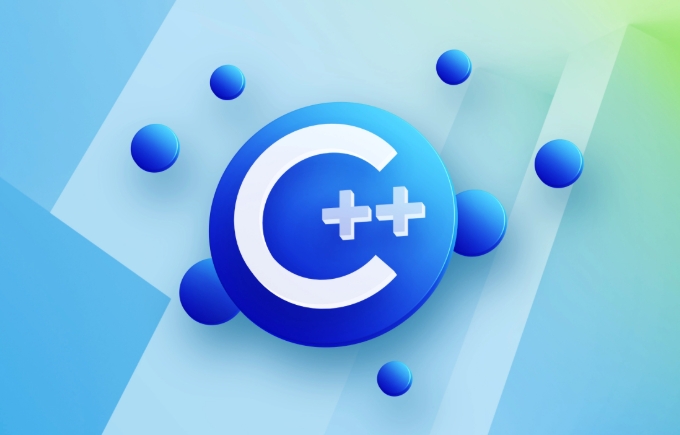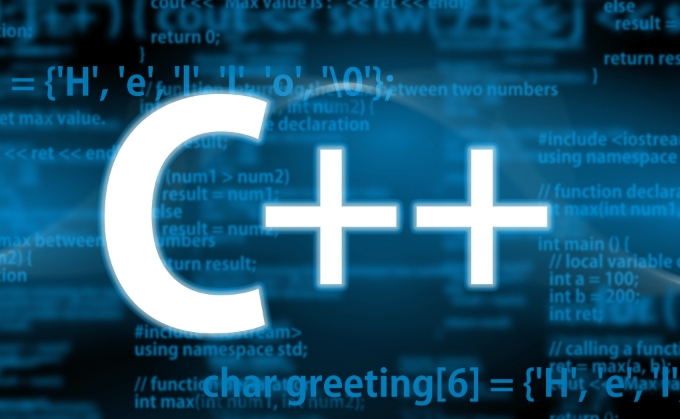C tutorial for competitive programming
学 C++ 冲着打比赛应从以下几点入手:1. 熟练基础语法但不必深入,掌握变量定义、循环、条件判断、函数等基本内容;2. 重点掌握 STL 容器如 vector、map、set、queue、stack 的使用;3. 学会快速输入输出技巧,如关闭同步流或使用 scanf 和 printf;4. 利用模板与宏简化代码书写,提高效率;5. 多刷题熟悉边界条件、初始化错误等常见细节问题。

学 C++ 应该从哪些地方入手?如果你是冲着打比赛来的,那重点就不只是语法了,得掌握怎么快速写代码、用好 STL、还有熟悉一些常用的技巧。下面这些内容都是在刷题和比赛中会频繁用到的。

基础语法要熟练但不必深入
你不需要把整个 C++ 语言都吃透,但基本的变量定义、循环、条件判断、函数这些必须熟练。比如 for 循环怎么写、数组怎么初始化、引用和指针的区别等等。

常见的几个注意点:
-
int main()是程序入口,别写成void main()。 -
cin和cout是输入输出的主要方式,虽然慢一点,但在多数情况下够用了。 - 多用
using namespace std;可以省事,虽然不是最佳实践,但在比赛中可以接受。
举个例子:

#include <iostream>
using namespace std;
int main() {
int n;
cin >> n;
for(int i = 0; i < n; ++i) {
cout << i << " ";
}
}熟练使用 STL 容器是关键
C++ 的优势之一就是标准库(STL)强大。比赛中最常用的是这几个容器:
vector:动态数组,非常灵活map/unordered_map:用来做键值对查找set/unordered_set:用于快速查重或排序queue/stack:配合 BFS 或 DFS 使用
举个例子,你想统计某个数组中每个数字出现的次数,用 map<int, int> 就很方便:
map<int, int> count;
for(int num : nums) {
count[num]++;
}建议:
- 不要死记复杂度,但要知道哪个操作是 O(1),哪个是 O(log n)
- 多用
auto简化代码,比如for(auto it : myMap) - 掌握
sort函数的使用方法,包括自定义比较函数
快速输入输出技巧不能少
在比赛中,数据量大时,用 cin 和 cout 会变慢。这时候可以用以下优化手段:
ios::sync_with_stdio(false); cin.tie(nullptr);
这样可以让输入更快。同时也可以改用 scanf 和 printf,虽然不那么“C++”,但效率高。
还有一个小技巧是,如果题目要求多组测试数据,可以在主函数外面声明变量,避免重复构造。
模板与宏简化代码书写
比赛中时间宝贵,很多人会写一些简化的宏来节省时间。例如:
#define vi vector<int> #define pb push_back
或者更激进一点的:
#define rep(i, a, b) for(int i = a; i < b; ++i)
不过要注意控制范围,别搞得别人看不懂。模板也可以适当用,比如写一个通用的结构体排序函数。
基本上就这些。刚开始可能会觉得东西很多,但多练几道题,慢慢就熟了。C++ 在竞赛里用得好,确实能提高效率。不复杂但容易忽略的地方,往往是调试时卡住的关键,比如边界条件、初始化错误或者迭代器失效这些细节。
The above is the detailed content of C tutorial for competitive programming. For more information, please follow other related articles on the PHP Chinese website!

Hot AI Tools

Undress AI Tool
Undress images for free

Undresser.AI Undress
AI-powered app for creating realistic nude photos

AI Clothes Remover
Online AI tool for removing clothes from photos.

Clothoff.io
AI clothes remover

Video Face Swap
Swap faces in any video effortlessly with our completely free AI face swap tool!

Hot Article

Hot Tools

Notepad++7.3.1
Easy-to-use and free code editor

SublimeText3 Chinese version
Chinese version, very easy to use

Zend Studio 13.0.1
Powerful PHP integrated development environment

Dreamweaver CS6
Visual web development tools

SublimeText3 Mac version
God-level code editing software (SublimeText3)

Hot Topics
 1793
1793
 16
16
 1736
1736
 56
56
 1587
1587
 29
29
 267
267
 587
587
 C tutorial for people who know Python
Jul 01, 2025 am 01:11 AM
C tutorial for people who know Python
Jul 01, 2025 am 01:11 AM
People who study Python transfer to C The most direct confusion is: Why can't you write like Python? Because C, although the syntax is more complex, provides underlying control capabilities and performance advantages. 1. In terms of syntax structure, C uses curly braces {} instead of indentation to organize code blocks, and variable types must be explicitly declared; 2. In terms of type system and memory management, C does not have an automatic garbage collection mechanism, and needs to manually manage memory and pay attention to releasing resources. RAII technology can assist resource management; 3. In functions and class definitions, C needs to explicitly access modifiers, constructors and destructors, and supports advanced functions such as operator overloading; 4. In terms of standard libraries, STL provides powerful containers and algorithms, but needs to adapt to generic programming ideas; 5
 What is the Standard Template Library (STL) in C ?
Jul 01, 2025 am 01:17 AM
What is the Standard Template Library (STL) in C ?
Jul 01, 2025 am 01:17 AM
C STL is a set of general template classes and functions, including core components such as containers, algorithms, and iterators. Containers such as vector, list, map, and set are used to store data. Vector supports random access, which is suitable for frequent reading; list insertion and deletion are efficient but accessed slowly; map and set are based on red and black trees, and automatic sorting is suitable for fast searches. Algorithms such as sort, find, copy, transform, and accumulate are commonly used to encapsulate them, and they act on the iterator range of the container. The iterator acts as a bridge connecting containers to algorithms, supporting traversal and accessing elements. Other components include function objects, adapters, allocators, which are used to customize logic, change behavior, and memory management. STL simplifies C
 Using std::chrono in C
Jul 15, 2025 am 01:30 AM
Using std::chrono in C
Jul 15, 2025 am 01:30 AM
std::chrono is used in C to process time, including obtaining the current time, measuring execution time, operation time point and duration, and formatting analysis time. 1. Use std::chrono::system_clock::now() to obtain the current time, which can be converted into a readable string, but the system clock may not be monotonous; 2. Use std::chrono::steady_clock to measure the execution time to ensure monotony, and convert it into milliseconds, seconds and other units through duration_cast; 3. Time point (time_point) and duration (duration) can be interoperable, but attention should be paid to unit compatibility and clock epoch (epoch)
 How to use cin and cout for input/output in C ?
Jul 02, 2025 am 01:10 AM
How to use cin and cout for input/output in C ?
Jul 02, 2025 am 01:10 AM
In C, cin and cout are used for console input and output. 1. Use cout to read the input, pay attention to type matching problems, and stop encountering spaces; 3. Use getline(cin, str) when reading strings containing spaces; 4. When using cin and getline, you need to clean the remaining characters in the buffer; 5. When entering incorrectly, you need to call cin.clear() and cin.ignore() to deal with exception status. Master these key points and write stable console programs.
 C tutorial for competitive programming
Jul 02, 2025 am 12:54 AM
C tutorial for competitive programming
Jul 02, 2025 am 12:54 AM
Learn C You should start from the following points when playing games: 1. Proficient in basic grammar but do not need to go deep into it, master the basic contents of variable definition, looping, condition judgment, functions, etc.; 2. Focus on mastering the use of STL containers such as vector, map, set, queue, and stack; 3. Learn fast input and output techniques, such as closing synchronous streams or using scanf and printf; 4. Use templates and macros to simplify code writing and improve efficiency; 5. Familiar with common details such as boundary conditions and initialization errors.
 C tutorial on the Standard Template Library (STL)
Jul 02, 2025 am 01:26 AM
C tutorial on the Standard Template Library (STL)
Jul 02, 2025 am 01:26 AM
STL (Standard Template Library) is an important part of the C standard library, including three core components: container, iterator and algorithm. 1. Containers such as vector, map, and set are used to store data; 2. Iterators are used to access container elements; 3. Algorithms such as sort and find are used to operate data. When selecting a container, vector is suitable for dynamic arrays, list is suitable for frequent insertion and deletion, deque supports double-ended quick operation, map/unordered_map is used for key-value pair search, and set/unordered_set is used for deduplication. When using the algorithm, the header file should be included, and iterators and lambda expressions should be combined. Be careful to avoid failure iterators, update iterators when deleting, and not modify m
 C tutorial for graphics programming with OpenGL
Jul 02, 2025 am 12:07 AM
C tutorial for graphics programming with OpenGL
Jul 02, 2025 am 12:07 AM
As a beginner graphical programming for C programmers, OpenGL is a good choice. First, you need to build a development environment, use GLFW or SDL to create a window, load the function pointer with GLEW or glad, and correctly set the context version such as 3.3. Secondly, understand OpenGL's state machine model and master the core drawing process: create and compile shaders, link programs, upload vertex data (VBO), configure attribute pointers (VAO) and call drawing functions. In addition, you must be familiar with debugging techniques, check the shader compilation and program link status, enable the vertex attribute array, set the screen clear color, etc. Recommended learning resources include LearnOpenGL, OpenGLRedBook and YouTube tutorial series. Master the above
 What is the volatile keyword in C ?
Jul 04, 2025 am 01:09 AM
What is the volatile keyword in C ?
Jul 04, 2025 am 01:09 AM
volatile tells the compiler that the value of the variable may change at any time, preventing the compiler from optimizing access. 1. Used for hardware registers, signal handlers, or shared variables between threads (but modern C recommends std::atomic). 2. Each access is directly read and write memory instead of cached to registers. 3. It does not provide atomicity or thread safety, and only ensures that the compiler does not optimize read and write. 4. Constantly, the two are sometimes used in combination to represent read-only but externally modifyable variables. 5. It cannot replace mutexes or atomic operations, and excessive use will affect performance.





